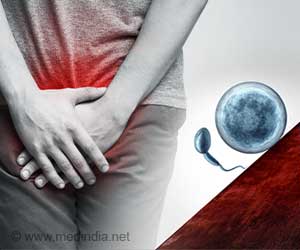An increase in a man's waistline could trigger sexual dysfunction and frequent urination, say researchers at New York-Presbyterian Hospital/Weill Cornell Medical Center.

"The findings demonstrate that obesity in men -- part of a growing global epidemic -- affects their well-being in profound ways," says the study's senior investigator Dr. Steven A. Kaplan, the E. Darracott Vaughan Jr., Professor of Urology at Weill Cornell Medical College, director of the Iris Cantor Men's Health Center and chief of the Institute for Bladder and Prostate Health at New York-Presbyterian/Weill Cornell.
"We have to think of the body in a much more holistic way. What we eat can have devastating consequences on more than just our hearts," Dr. Kaplan says. "Quality of life issues, such as sexual and voiding health, can be affected as well in drastic ways."
The study also suggests that losing weight can help men overcome these issues that previously were not directly linked to body mass, Dr. Kaplan adds. In fact, additional findings conducted since this study was completed show that eliminating just 2.5 inches from the belly's circumference may lead to measurable improvement in sexual dysfunction and frequent urination, he says.
The findings now offer physicians an easy metric to gauge which male patients might be experiencing sexual or urologic dysfunction, the researchers say.
"Measuring a man's waistline is easy, noninvasive and does not require extensive testing," Dr. Kaplan says.
Largest Waist Size Linked to Many Health Issues
The research team studied 409 men diagnosed with lower urinary tract symptoms (LUTS) at the Institute for Bladder and Prostate Health at NewYork-Presbyterian/Weill Cornell. The goal of the study was to see if obesity was linked to LUTS, a common problem affecting older men. LUTS symptoms include difficulty urinating, such as increased frequency during the day and night. Previous smaller studies have suggested body weight could be linked to LUTS, but this new study was designed to be the most definitive and comprehensive to date, Dr. Kaplan says.
Of the participants enrolled in the study ranging from 40-91 years of age, 37.5 percent had a waist circumference of less than 36 inches, 33.5 percent of men had waists that were between 36-40 inches, and 29 percent of men had waists greater than 40 inches.
The investigators found that a larger waist size was linked to more frequent urination: 39 percent of men with the biggest waistlines urinated more than eight times in 24 hours, compared to 27 percent of men in the middle range and 16 percent of men with the smallest waists. The same patterns were seen for nighttime urination: 44 percent of men with the biggest waists had to urinate more than twice at night, compared to 29 percent of men in the middle-sized group, and 15 percent of the slimmer men. The researchers also surveyed the participants about their sexual health and found that 74.5 percent of men with the largest waists reported erectile dysfunction, compared with 50 percent of men in the middle group and 32 percent of men with the smaller waists. Ejaculation problems followed the same pattern – 65 percent, 40 percent, and 21 percent, respectively.
To provide a comprehensive view of health issues associated with waist circumference, the research team also assessed other variables linked to obesity. In the study, high blood pressure, cholesterol, coronary artery disease and type 2 diabetes were more prevalent in men with larger waist sizes.
Dr. Kaplan says he does not know why obesity leads to sexual and urinary dysfunction, but he hypothesizes that vascular or blood flow changes to the pelvis, along with alterations in hormone levels due to obesity, may be the major culprit.
"We now have an expanded understanding of how obesity can impact the health of men, and a simple way to recognize which men might be affected in these ways," Dr. Kaplan says. "This adds even more importance to the recommendation that men should maintain a healthy weight for their overall well-being."
Source-Eurekalert













